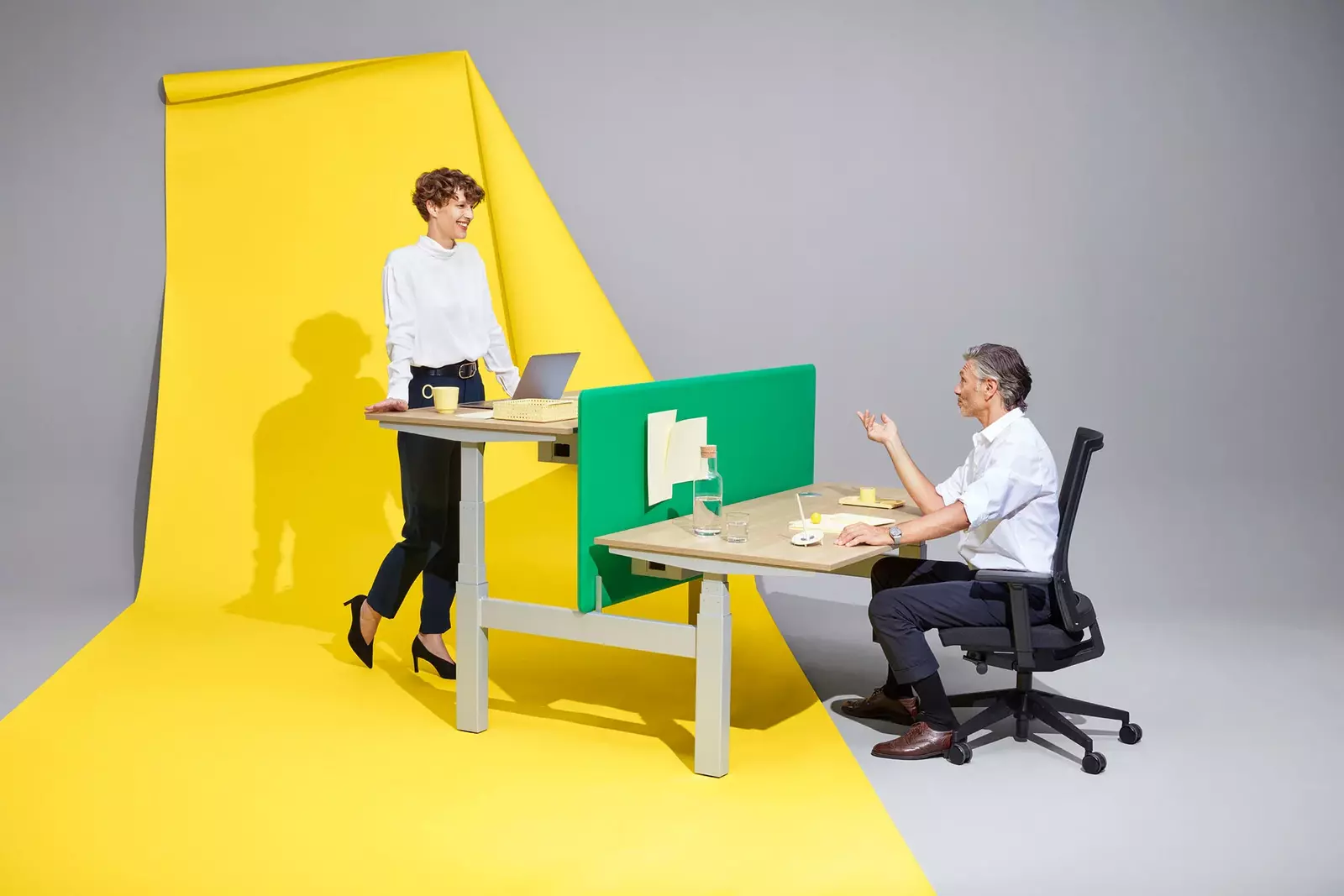Sitting & Standing
We spend approximately 55,000 hours of our professional lives in a sitting position.
This has several consequences, such as strain, back and neck pain, reduced performance, fatigue, and lack of concentration and motivation. The causes of such problems are frequently a lack of movement and sitting for long periods of time. And this is also often accompanied by inadequate work organisation and ergonomic deficits at the workplace.


We spend approximately 55,000 hours of our professional lives in a sitting position.
This has several consequences, such as strain, back and neck pain, reduced performance, fatigue, and lack of concentration and motivation. The causes of such problems are frequently a lack of movement and sitting for long periods of time. And this is also often accompanied by inadequate work organisation and ergonomic deficits at the workplace.
Back problems are the No. 1 cause of illness
Office and screen work performed while sitting cause severe stress to the musculoskeletal system, in particular to the neck, back and shoulders. At 10%, back problems are the number one cause of illness, resulting in the longest-term inability to work with an average duration of 22 days.

Sitting. Standing. Walking. Life is movement.
Physical problems with the musculoskeletal system can often be prevented by encouraging movement in the office. Scientific studies have shown that switching between sitting, standing and moving shorten sitting phases and activate the body and mind. The sit-stand dynamic relieves the back, trains the musculature, improves breathing, benefits the heart, circulation and digestion and leads to a better overall feeling of well-being.
To end the daily marathon of sitting, industrial scientists prescribe the sit-stand dynamic. A worktable that allows employees to work while sitting and standing is ideal. The more often employees change their working posture and their location, the healthier they will be. For example, for an informal conversation, for meetings and presentations in modern zones such as We-Places or lounge zones. Sit a bit, stand up, move around. That’s how the body stays in motion and he thoughts continue to flow.
Stand-sit dynamics
To end the daily sitting marathon, work scientists advise standing-sitting dynamics. A work desk for alternating between sitting and standing is ideal. The more frequent the change in working posture and the more often you change locations, the healthier employees will stay. For example, for informal exchanges, meetings and presentations in modern zones such as we-places or lounge zones. Sometimes sitting, sometimes standing, sometimes moving. This keeps the body moving and the thoughts flowing.
LOAD ON THE BACK
When sitting with a curved back, the load on the intervertebral discs is twice as high as when standing. From this point of view, it is all the more surprising that people do not already work much more while standing.

Advantages of sit-stand workstations
- 90% of users cite an overall increase in performance
- 63.5% of users of sit-stand workstations have fewer back and neck complaints
- Less fatigue at work
- Better ability to concentrate
- Movement stimulates productivity and creativity
- Time savings: standing employees make shorter phone calls, for example (friendlier, more determined)
- Lower sickness costs
- Shorter downtime
- Long-term cost savings
How can a stand-sit dynamic be achieved?
- Behavioral training and education of employees so that every opportunity to change posture is taken advantage of
- Create technical conditions, i.e. set up stand-sit workstations
- Change work processes in favor of more movement: e.g., making phone calls while standing, holding meetings while standing, changing locations
- Establish zones and areas for communication
- Standing workstation should encourage use and be easy to use
- Standing areas must be set up in favorable locations



